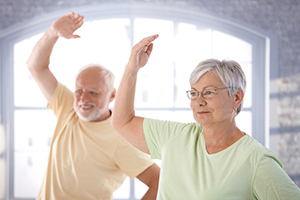Health Blog
Taking proper precautions to prevent falls

Falls are extremely common for older adults and can lead to many issues
If you, or anyone close to you is older than 65, concern for falling is likely to be very high, and for good reason. More than one-in-three (33%) adults over 65 suffers from a fall every year, and more than 1.6 million of these older adults go to the emergency room for fall-related injuries. As a result, falls are the leading cause of fractures, hospital admissions for trauma, loss of independence and death due to injury for older adults. Over 95% of all hip fractures are due to falls, and these injuries often lead to extensive hospital stays and disability that prevents individuals from leading a normal life.
Fear of falling can make matters worse
Falls are most prevalent in the older population, and the likelihood of falling increases with age. Unfortunately, this has led to fear of falling also becoming more common with age, even for those who have never fallen. This fear can make the situation worse because it leads some to avoid walking or regularly taking part in other social activities. The lack of regular physical activity can eventually lead to less muscle strength and flexibility, which will make one even more vulnerable to falling. Therefore, getting over a fear of falling can help one to stay more active, maintain better physical condition and also avoid future falls.
Falls can be prevented with regular exercise and removing potential hazards
Though falls are common and potentially dangerous for older individuals, the good news is that they can often be prevented if certain precautionary steps are taken. For older adults who aren't physically impaired, 30 minutes of physical activity five days a week is strongly recommended to improve strength and balance. In addition, it's important to have eyesight checked yearly for vision issues and to identify—and remove if necessary—any medications that could cause drowsiness or dizziness. Finally, potential hazards that can cause a fall should be removed from the home, and non-skid mats and grab bars should be installed in all dangerous locations. Friends or family members can help perform a walkthrough of living spaces to identify and modify hazards and do all that's possible to keep older adults safe and on their feet.
-Summarized from an article in the winter '14 issue of NIH Medline Plus
August 27, 2014
Back to Health BlogHEALTH BLOG
- Physical Therapy May Help Against the Common Causes of Hip Pain
- Stretching Could Be A Game-Changer for Chronic Pain Relief
- Easing the Burden of Tension Headaches With Physical Therapy
- Got Heel Pain? New Study Reveals How to Outsmart Plantar Fasciitis
- How Physical Therapy Can Tame Whiplash-Related Symptoms
- Exercise Therapy May Provide Relief for Chemotherapy-Related Issues
- Unlocking Relief From Elbow Pain With Hands-On Therapy and Exercise
- Are Deep Squats Really as Bad as We Think?
- Reclaiming Your Grip: The Power of Hands-On Therapy for Tennis Elbow
- Runners Can Overcome a Common Knee Condition With Physical Therapy
ARTICLES
RECENT ARTICLES
-

-
Shoulder and Rotator Cuff Workshop
February 23, 2021
-

-
Did you Know Physical Therapy Can Help Reduce Stress Related Headaches? Here’s How.
October 14, 2019
-

-
5 Ways Stretching can Improve Your Overall Health
October 8, 2019
-

-
If You Have any of These 5 Symptoms, You May Need Physical Therapy.
September 20, 2019

